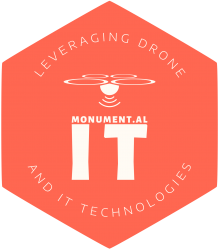Sportskeeda have just published a useful article about Windows firewall. Find out how to configure it for better security here.
What’s best, Windows or macOS?
I try to be technology agnostic. I use a range of technologies from PCs, an Apple Mac, mobile phone, a tablet, and various audio/visual and home automation devices, running on a range of operating systems (Windows, Linux, MacOS, Android, etc). Where possible I try not to get locked into technology that doesn’t pass the test of time. For example, I get annoyed when technology like my iPad or Apple TV suddenly stop getting updated or apps stop working, leaving me with expensive useless paper weights. This is one of the reasons I have stuck to the Windows platform. The MakeUseOf guys have published an article about why Windows is better than macOS here.
Connect your iPhone to Windows 11
One of the great benefits of being a Windows and an Android phone user, is the ability to connect and manage the phone from within Windows. View and copy photos stored on the phone, and view and send messages using the computers monitor and keyboard are a great boon. Now iPhone users will start to benefit from connecting their phones to Windows 11. Find out more in PC Magazine’s article here.
Anybody remember MS-DOS?
Before Windows there was MS-DOS (and PC-DOS). This is where most of us older computer users first cut their teeth when becoming familiar with the then new fangled Personal Computers. Take a trip down memory lane (or learn about what we did in the past) with MakeUseOf’s article here. Actually, most of MS-DOS is still there under the covers in Windows, in the Command Prompt.
Did you know that before MS-DOS there was CP/M, but that is another story.
Microsoft rebuilding Windows 11 Taskbar from the ground up
Windows 11 users will be happy that some classic Taskbar features are being re-added. Read more about this in Windows Central’s article here.
How do you zoom-in on Windows?
Just the other day I was watching somebody struggle with fonts and icons that were just too small to read on the monitor they had attached to their Windows computer. If I had read the article Pocket-Lint have recently written, I would have been able to help them. Help yourself by reading the article here and discover the three ways you can zoom in Windows.
More free Virtualisation software
Back in the late 70’s I was using virtualisation technology while developing software on IBM mainframe computers. Then in the late 90’s this technology eventually made its way to personal computers and revolutionised the way we then started to use PCs for business.
Nowadays there are many solutions, both paid and free versions, that you can use on just about any hardware platform. A previous blog (here) mentioned some of those solutions. However one free important one, KVM, was missing from that article however; and gets a mention in a recent article (here) from the MakeUseOf.com guys.
Unlinking OneDrive from your Microsoft Account
If like me you are using Dropbox or another cloud-based storage manager, you probably don’t have a need to also utilise OneDrive (Microsoft’s equivalent) which is automatically installed with Windows. The MakeUseOf.com folks explain how you can unlink OneDrive from your computer here.
Seeing a “This Setting is Managed by Your Administrator” in Windows?
Sometimes when using Windows Security you might get a “This Setting is Managed by Your Administrator” message. The MakeUseOf.com guys have just published an article that may help you. Read it here.
Millions of Windows 11 devices at risk
The Trusted Platform Module (TPM) 2.0 chips which are designed to improve the security in newer PCs have been found to contain two vulnerabilities. Read this Tom’s Hardware article to discover more.
Want to uninstall multiple Windows apps in one step?
There are many ways to uninstall Windows apps, including uninstalling many at the same time. Discover more in Popular Science’s article here.
Windows 11 collects more of your data
Digital Trends have just published an article about the increasing amount of data Microsoft is collecting when you use their Windows operating systems. Read all about that and what programs you can run to control and limit what your computer sends out in their article here.
What’s using all the disk space on my Windows PC?
Great article by the MakeUseOf guys about how to discover what is consuming all your Windows PC’s disk drive space, and then how to clean out all the clutter to get some of that space back. Read it here and/or watch the following Youtube video from Liron Segev about deleting garbage files from Windows.
Windows 10 is still king
Despite Microsoft pushing upgrades from Windows 10, Windows 11 still only commands 18.1%, with Windows 10 at 82.4% of the market as of last month. Read more in TechSpot’s article here.
Your Windows Search index database could be gobbling up your C: drive
Your Windows Search index database allows you to quickly search for data and files on your computer’s file system. This can grow quite large if you store a lot of files. However there are ways you can manage the file as discussed in this post from Windows OS Hub.

